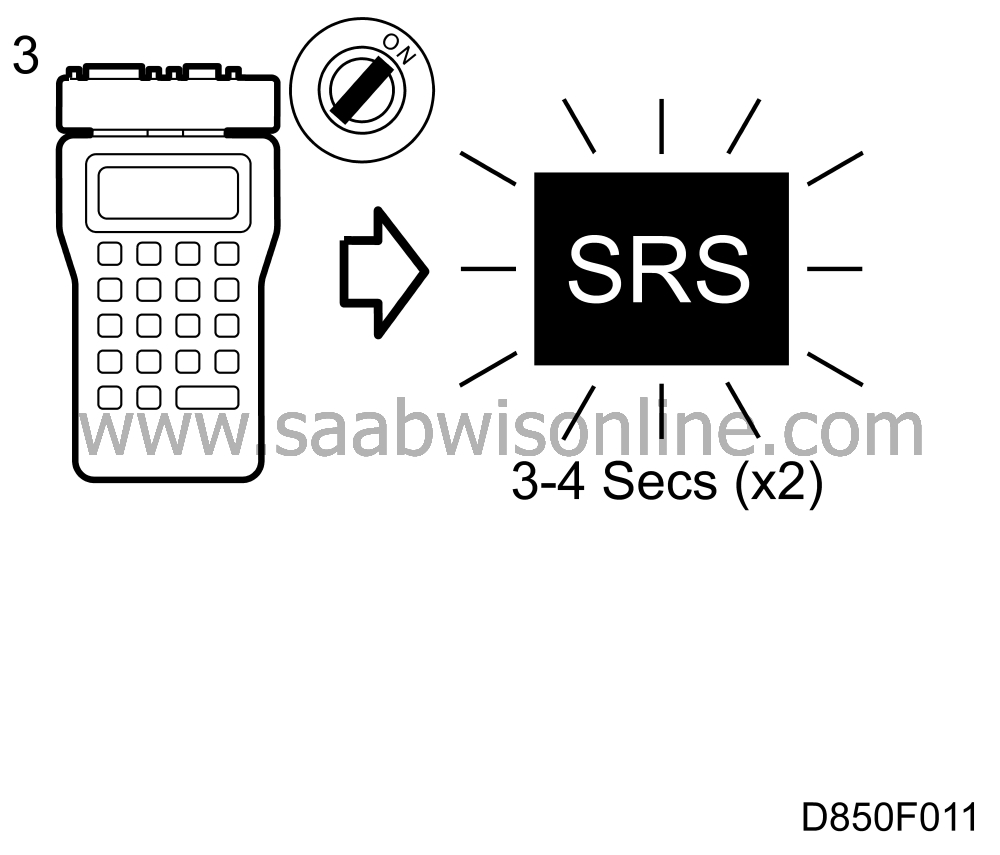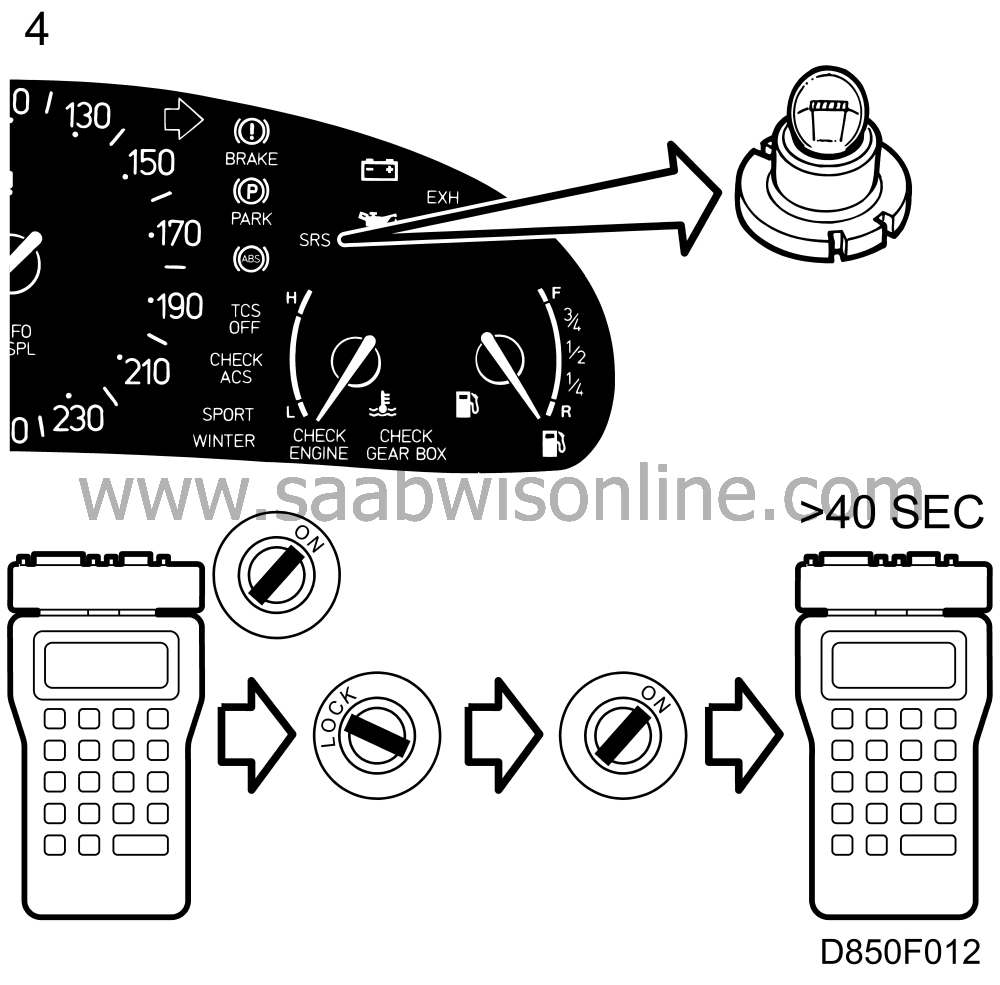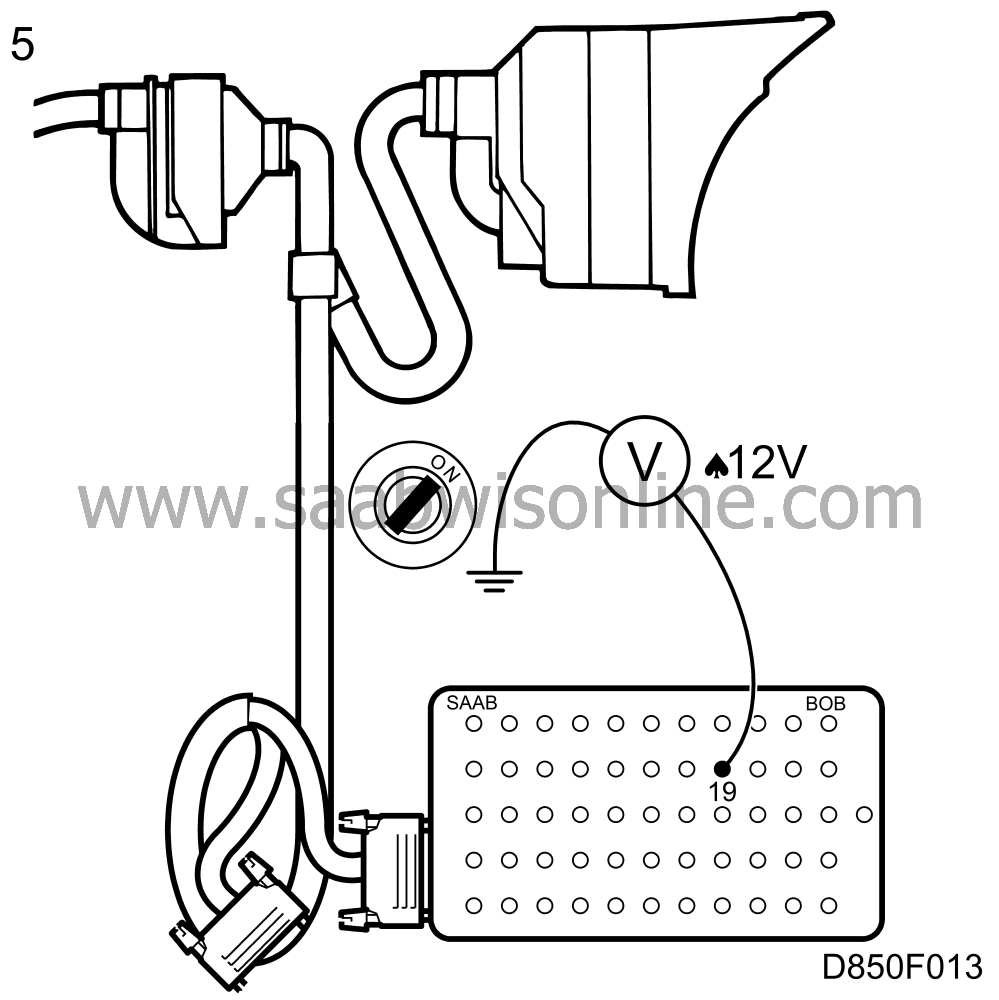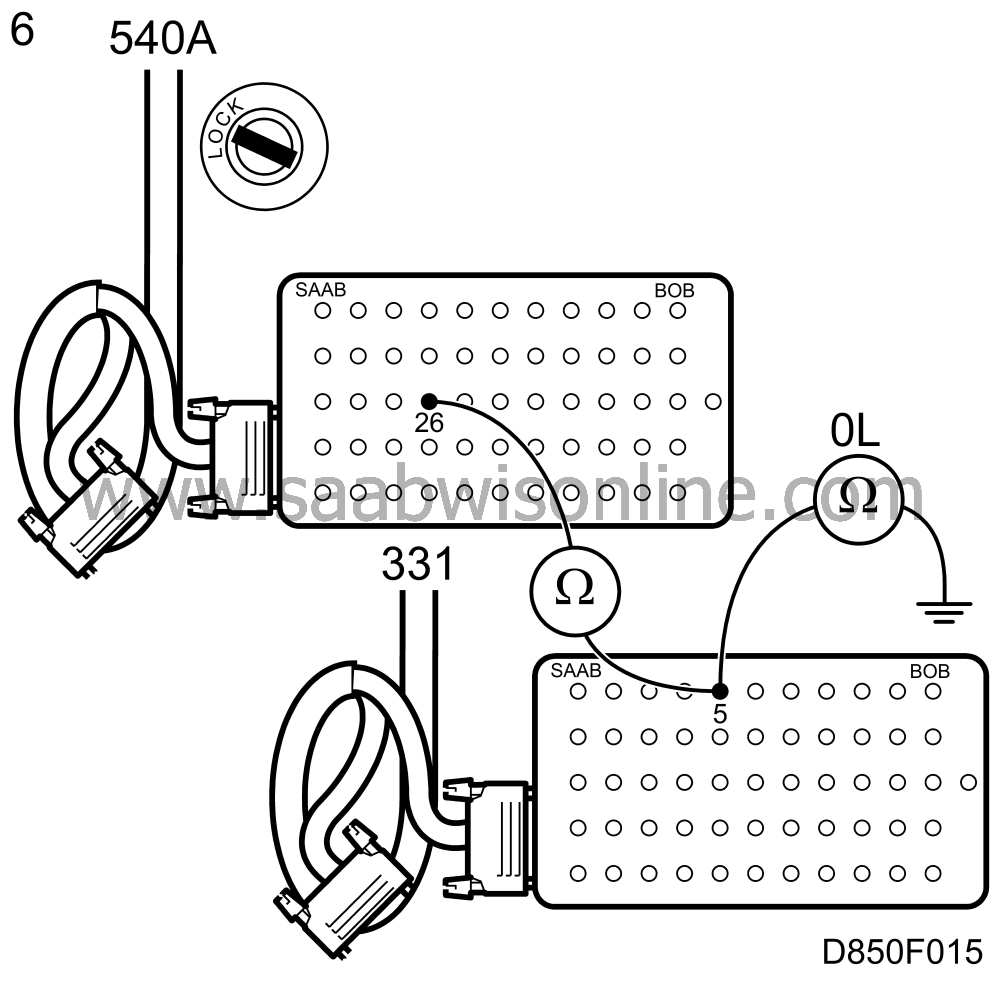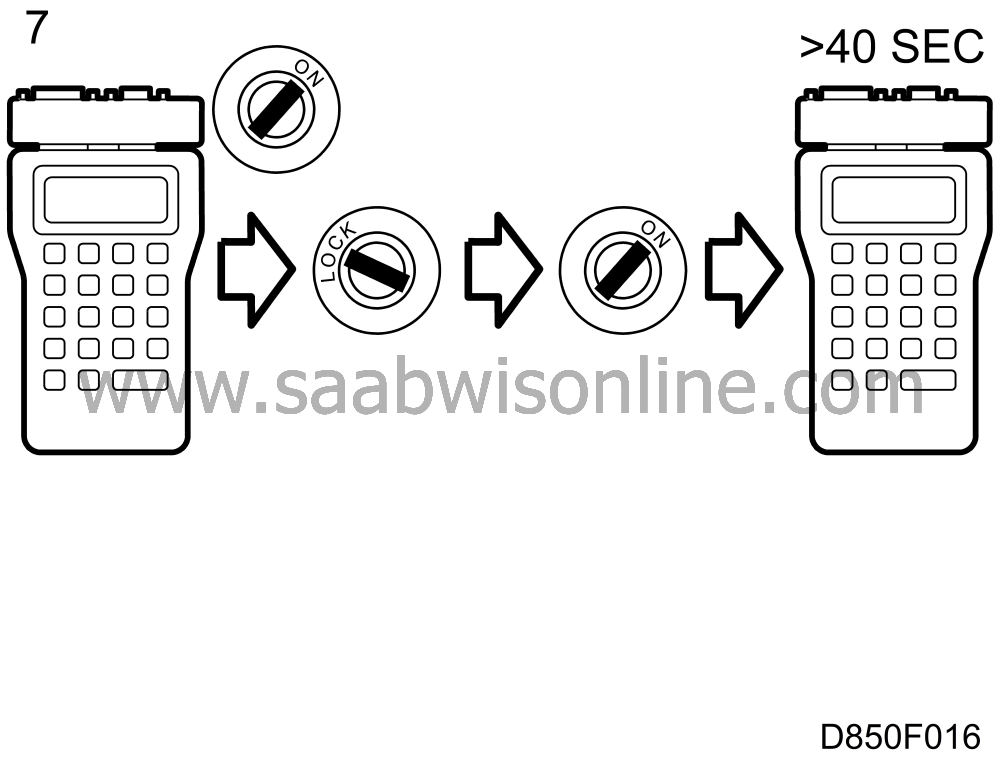B1228
| B1228 |
Bulb 1 in the SRS symbol, burnt out, open circuit in the wiring or short circuit to ground (bulb connected to control module pin 5).
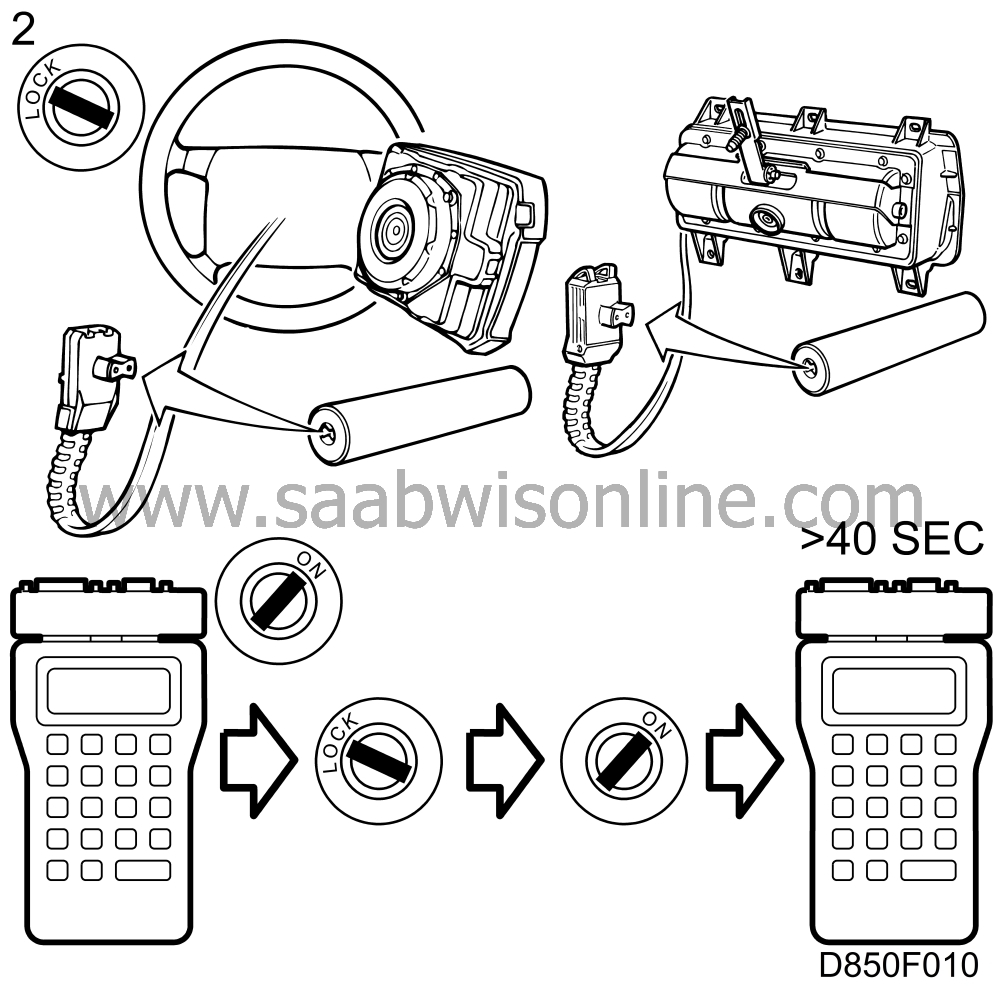
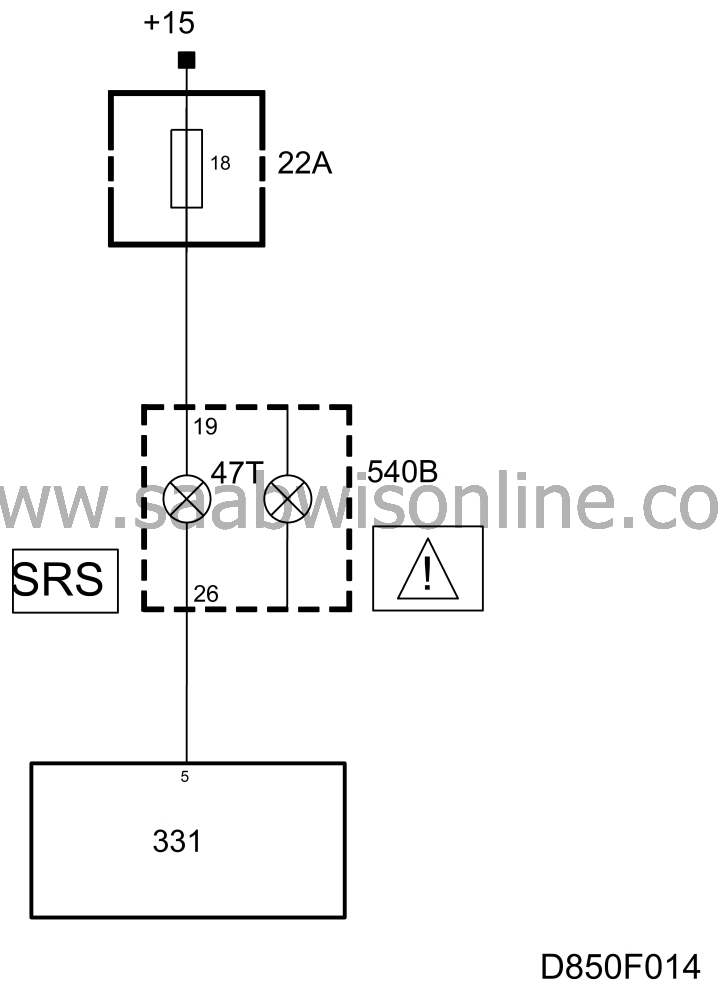
| Cars with central warning lamp |
| 1. |
Make a note of the diagnostic
trouble code and then clear it. Switch the ignition off and on again, wait for at least 40 seconds
with the ignition switched on and check to see whether the diagnostic trouble code
recurs.
If it does, it is a permanent fault. Proceed to point 2. If it does not, the fault is intermittent. Leave the ignition switched on and jiggle the connectors and wiring to check for an open circuit or loose contact. Switch the ignition off and then on again. With the ignition switched on, wait for at least 40 seconds and then check whether the diagnostic trouble code recurs. |
|
| 2. |
Unscrew the steering wheel airbag and unplug the connector at the back of the
airbag. Connect reference resistor 84 71 153 to the connector.
On cars with a passenger airbag, remove the glove box, unplug the connector on the underside of the passenger airbag and connect reference resistor 84 71 153 to the connector. If the SRS lamp remains on continuously after the ignition has been switched on, proceed to point 6. |
|

